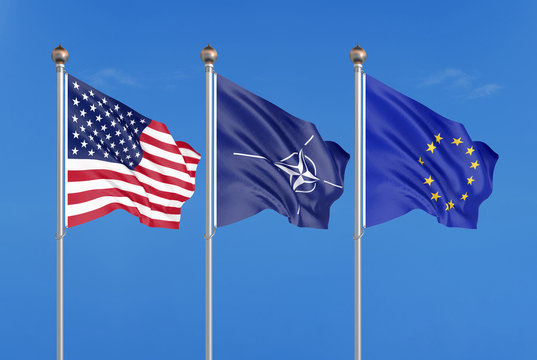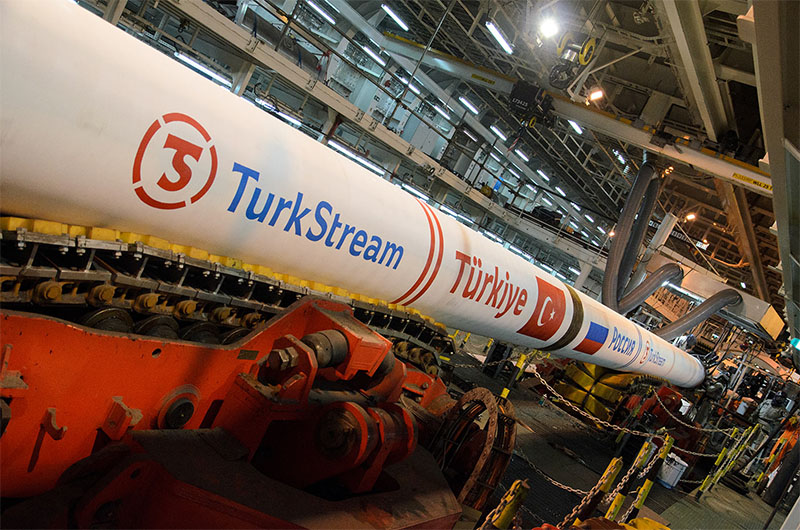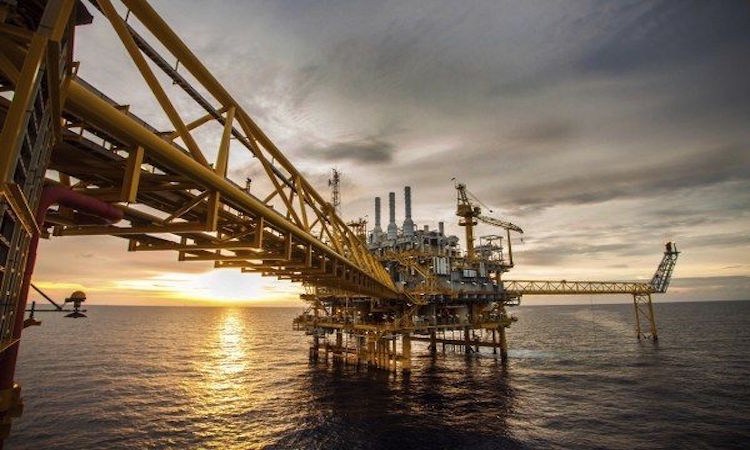
There have been significant developments in the economic infrastructure of the Central Asian countries since the 2000s and foreign investments have contributed considerably to the development of the region's economy. After the collapse of the Soviet Union, China, which focused on developing its infrastructure connections and economic and commercial relations with Central Asian countries, has become an important actor in foreign investments in the region. The energy and mineral resources of the region and the new markets in Central Asia have been in the focus of China's attention.
China's investments in Central Asia are made as part of the Belt and Road Initiative or within the framework of bilateral projects between China and Central Asian countries. Trade promotion and industrial development investments come first among the investments within the framework of the Belt and Road Initiative and in bilateral projects. Sub-sectors of the projects within this scope are as follows: mineral and petroleum exploration, extraction and processing projects; industry; agriculture and food; and finance and information technology.[1] We discussed China's influence in Central Asia's trade in our previous article.[2] It is seen that investments originating from China contribute to this dominant role of China in this sector in Central Asian trade. As a result of the China’s investments in the mining sector, China's influence has increased in the foreign trade of Central Asia. Railway and road connection projects come second in the investments while energy connectivity is another important sector. China's investments in rail and road projects in Central Asia has reduced logistics costs, has expanded trade between China and Central Asia, and has provided more foreign investments.
Among the Central Asian countries, Kazakhstan is the country that attracts the most Foreign Direct Investment (FDI). Natural resource extraction accounts for more than 70% of Kazakhstan's total FDI stock.[3] According to the World Investment Report 2020 of the United Nations Conference on Trade and Development (UNCTAD), FDI inflows to Kazakhstan in 2019 has declined by 17% compared to the previous year and amounted to 3.1 billion dollars. Its total FDI stock is calculated as approximately 150 billion dollars in 2019.[4] The largest project initiated in Kazakhstan in 2019 was a carbide plant of a China-based company engaged in the production and sale of petrochemical products and chemical fertilizers.[5] Approximately half of China's investments in Kazakhstan is in oil and gas projects, while the rest are in mining and ore processing, machine manufacturing, energy, and food production.[6]
Due to the economic reforms implemented in Uzbekistan, FDI inflows in 2019 more than tripled and reached 2.3 billion dollars,[7] while the total FDI stock was 9.5 billion dollars.[8] At the same time, part of the foreign investment inflows related to large projects in oil and gas has been by Russia. Also, in 2019, companies from China, Russia, Singapore, the UK, and the US started a series of projects in chemical production in Uzbekistan. Orano Mining (France) has also invested large amounts in uranium exploration and development. In the textiles and apparel industry, projects have been initiated by Chinese, German, Indian, Korean, Thai, and Turkish companies.[9] The largest new project announced in 2019 in Uzbekistan was an electricity project by a Turkish company.[10]
FDI inflows to Turkmenistan increased by 9% to 2.2 billion dollars in 2019, meaning the total FDI stock in the country reached 38 billion dollars.[11] Turkmenistan is not included in the World Bank Doing Business survey due to a lack of data, however according to an OECD report, China is estimated to be the country's largest foreign investor.[12] Almost half of the foreign investments (between 2003 and 2017) have been in oil and natural gas, followed by transportation (24%) and metals (10%).[13] In 2019, the construction sector was also a rising investment field in Turkmenistan.[14]
In 2019, FDI inflow to Tajikistan decreased in comparison to the previous year (from 360 million to 213 million dollars), and the FDI stocks totaled 3 billion dollars.[15] In 2019, Chinese foreign investments accounted for almost 76& of FDI, followed by Russia, the UK, and Turkey.[16] The most of the Chinese investments have been in the mining sector.[17] According to US Department of State, Chinese investments account for more than three-quarters of the Tajikistan’s total FDI, with the loans connected to the Belt and Road Initiative.[18] Chinese firms investing in Tajikistan in 2019 continued to benefit from tax exemptions.[19]
In 2019, FDI flows to Kyrgyzstan increased compared to the previous year, reaching 209 million up from 139 million dollars, while the total FDI stock was 5.6 billion dollars.[20] Most of the foreign investments have been mining-related. The main investors in Kyrgyzstan are Canada, China, the UK, Russia, and Kazakhstan.[21] Kyrgyzstan directs loans from the Eximbank of China towards infrastructure projects, and these loans have improved market access for Chinese companies.[22]
Loans from China accounted for 45.3% of Kyrgyzstan’s external debt (May 2019).[23] While China is creating infrastructure projects within the framework of the Belt and Road and opening new markets, China's credit loans have raised concerns about a “debt trap diplomacy” and have caused protests in Central Asian countries. During Xi Jinping's 2019 visit to Kyrgyzstan, a 280-million-dollar project by a Chinese company to build a logistics center in Kyrgyzstan was agreed upon; however, the project was canceled as the public saw the project as a land grab and protests escalated.[24]
In addition to the reactions of the Central Asian countries hosting the projects financed by China (because of the growing concerns regarding to the debt to China), the Belt and Road Initiative faces several other challenges in Central Asia. As a result of loans being provided to Central Asian countries on the condition that Chinese technology is used Chinese workers are hired, employment problems in Central Asian countries remain unsolved, which lead to disputes regarding economic needs.[25]
In August 2019, locals in Kyrgyzstan clashed with the Chinese workers at a gold mine in Naryn. The Kyrgyz people blamed the Chinese company for the high death rate of their livestock, saying the mining firm had contaminated the environment. Following the clashes, the Chinese company suspended its activities in the Kyrgyz gold mine.[26]
In 2019, there were also protests against Chinese investments in Kazakhstan. In September 2019, during the large-scale protests in Kazakhstan, the public urged the Kazakh government to stop borrowing from China and demanded the government to stop the Chinese investment projects that would have numbered 55 with the implementation planned projects. Going back further, in 2016, protests had broken out in Kazakhstan against a draft law on the lease of agricultural land by foreigners and the bill was thus shelved.
These examples and other similar reactions in Central Asian countries reflect public concerns about national sovereignty. Besides the employment problem mentioned above, the lack of transparency and the potential for corruption in these countries raise concerns about trust in governments and cause China to be seen as a threat to national sovereignty. In addition, Chinese pressure on Uyghur Turks in the Xinjiang Uyghur Autonomous Region which also includes Kazakh and Kyrgyz ethnic populations has contributed to the increase of anti-Chinese sensitivity in Central Asian countries.
Central Asia continues to be an important market for China and constitutes an alternative to the sea route for the country. Also, the presence of energy and mineral reserves in the region is another reason for its importance to China. In this respect, China has started to concentrate more on taking part in multilateral projects in the region in the face of anti-Chinese reactions and related risks that could endanger investments.[27] In addition, China is turning towards industrial capacity building projects rather than large infrastructure projects.[28] European Union countries also show interest in investments in Central Asia and investments from the EU constitute 40 percent of the region's total foreign direct investment.[29] Therefore, it is expected that China will be more involved in joint projects with EU countries in the region and diversify its investments in the coming years.
[1] Roman Vakulchuk, Farkhod Aminjonov, Indra Overland, Bahtiyor Eshchanov, “BRI in Central Asia: Overview of Chinese Projects” , Central Asia Regional Data Review, 20, 2019, p. 3.
[2] Gülperi Güngör, “Orta Asya Ticaretinde Çin Nüfuzu”, AVİM, 4 Haziran 2020, https://avim.org.tr/tr/Analiz/ORTA-ASYA-TICARETINDE-CIN-NUFUZU
[3] Ariel Cohen, “The need for soft infrastructure development in Central Asia: Pathway to growth”, DOC Research Institute, November 25, 2019, https://doc-research.org/2019/11/infrastructure-development-central-asia/
[4] “World Investment Report 2020”, UNCTAD, 2020, https://unctad.org/system/files/official-document/wir2020_en.pdf
[5] Ibid.
[6] Eugene Simonov, “Half of China’s investment in Kazakhstan is in oil and gas”, The Third Pole, November 7, 2019, https://www.thethirdpole.net/2019/11/07/half-of-chinas-investment-in-kazakhstan-is-in-oil-and-gas/#
[7] “World Investment Report 2020”, p. 59.
[8] “World Investment Report 2020”, p. 245
[9] “World Investment Report 2020”, p. 59
[10] “World Investment Report 2020”, p. 77
[11] “World Investment Report 2020”, p. 245
[12] “Investment in sustainable infrastructure in Turkmenistan”, OECDiLibrary, https://www.oecd-ilibrary.org/sites/bac02dee-en/index.html?itemId=/content/component/bac02dee-en
[13] Ibid.
[14] “Türkmenistan’da inşaat sektöründe büyük yatırımlar”, T.C. Ticaret Bakanlığı, https://ticaret.gov.tr/blog/ulkelerden-ticari-haberler/turkmenistan/turkmenistanda-insaat-sektorunde-buyuk-yatirimlar
[15] “World Investment Report 2020”, p. 245
[16] “2020 Investment Climate Statements: Tajikistan”, US Department of State, https://www.state.gov/reports/2020-investment-climate-statements/tajikistan/
[17] Seymur Mammadov “China and Central Asia: Win-win cooperation”, CGTN, September 16, 2020, https://news.cgtn.com/news/2020-09-16/China-and-Central-Asia-Win-win-cooperation-TPDn5hBMVG/index.html
[18] “2020 Investment Climate Statements: Tajikistan”
[19] “Tajikistan Foreign Investment”, Sander Trade, https://santandertrade.com/en/portal/establish-overseas/tajikistan/investing-3
[20] “World Investment Report 2020”, p. 245
[21] “Kyrgyzstan Foreign Investment”, Sander Trade, https://santandertrade.com/en/portal/establish-overseas/kyrgyzstan/investing-3
[22] “2020 Investment Climate Statements: Kyrgyzstan”, US Department of State, https://www.state.gov/reports/2020-investment-climate-statements/kyrgyz-republic/
[23] Daisuke Kitade, “Central Asia Undergoing A Remarkable Transformation: Belt And Road Initiative And Intra Regional Cooperation”, Mitsui & Co. Global Strategic Studies Institute Monthly Report, August 2019, p. 4.
[24] “China-led $280 million Kyrgyzstan project abandoned after protests”, Reuters, February 18, 2020, https://www.reuters.com/article/us-kyrgyzstan-china-investment-protests-idUSKBN20C1HA
[25] Daisuke Kitade, “Central Asia Undergoing A Remarkable Transformation…”
[26] “Chinese Company Suspends Operations At Kyrgyz Gold Mine After Clashes”, Radio Free Europe Radio Liberty, August 07, 2019 https://www.rferl.org/a/chinese-gold-mining-company-suspends-kyrgyz-operations/30097658.html
[27] Dirk van der Kley, “China diversifies in Central Asia”, Eurasianet, November 23, 2020, https://eurasianet.org/china-diversifies-in-central-asia
[28] Ibid.
[29] Aidana Yergaliyeva “FDI to Central Asia Reached 378.2 billion Over Past 13 years”, Astana Times, December 2020, https://astanatimes.com/2020/12/fdi-to-central-asia-reached-378-2-billion-over-past-13-years/
© 2009-2025 Center for Eurasian Studies (AVİM) All Rights Reserved
No comments yet.
-
 CHINA'S "PREVENTIVE" SECURITY MECHANISMS AND THEIR REFLECTIONS ON UYGHUR TURKS
CHINA'S "PREVENTIVE" SECURITY MECHANISMS AND THEIR REFLECTIONS ON UYGHUR TURKS
Gülperi GÜNGÖR 21.01.2021 -
 FOREIGN INVESTMENTS IN CENTRAL ASIAN COUNTRIES AND CHINA'S ROLE
FOREIGN INVESTMENTS IN CENTRAL ASIAN COUNTRIES AND CHINA'S ROLE
Gülperi GÜNGÖR 22.12.2020 -
 TURKIC COOPERATION IN THE CENTER OF EURASIA: THE TURKIC COUNCIL
TURKIC COOPERATION IN THE CENTER OF EURASIA: THE TURKIC COUNCIL
Gülperi GÜNGÖR 05.02.2021 -
 TRANSPORTATION PROJECTS IN CAUCASIA
TRANSPORTATION PROJECTS IN CAUCASIA
Gülperi GÜNGÖR 27.05.2021 -
 MORE THAN A LOCAL CONFLICT: THE KYRGYZSTAN-TAJIKISTAN BORDER DISPUTE
MORE THAN A LOCAL CONFLICT: THE KYRGYZSTAN-TAJIKISTAN BORDER DISPUTE
Gülperi GÜNGÖR 10.02.2023
-
 THE EU’S WORRIES ON THE US’ MILITARY EXISTENCE/ABSENCE
THE EU’S WORRIES ON THE US’ MILITARY EXISTENCE/ABSENCE
Hazel ÇAĞAN ELBİR 11.01.2021 -
 AFTER BREXIT: THE FOOTSTEPS OF A TRULY CAROLINGIAN EUROPEAN UNION
AFTER BREXIT: THE FOOTSTEPS OF A TRULY CAROLINGIAN EUROPEAN UNION
Teoman Ertuğrul TULUN 15.03.2019 -
 THE INCREASING IMPORTANCE OF TURKSTREAM FOLLOWING KIEV'S SUSPENSION OF RUSSIAN GAS SHIPMENT TO EUROPE
THE INCREASING IMPORTANCE OF TURKSTREAM FOLLOWING KIEV'S SUSPENSION OF RUSSIAN GAS SHIPMENT TO EUROPE
Bekir Caner ŞAFAK 17.01.2025 -
 EASTERN MEDITERRANEAN ENERGY: AN OPPORTUNITY OR A DANGER?
EASTERN MEDITERRANEAN ENERGY: AN OPPORTUNITY OR A DANGER?
Tutku DİLAVER 01.10.2018 -
 GREEK POLICIES TOWARDS TURKISH MINORITY SCHOOLS RISK REPEATING HISTORY
GREEK POLICIES TOWARDS TURKISH MINORITY SCHOOLS RISK REPEATING HISTORY
Teoman Ertuğrul TULUN 19.08.2025
-
25.01.2016
THE ARMENIAN QUESTION - BASIC KNOWLEDGE AND DOCUMENTATION -
12.06.2024
THE TRUTH WILL OUT -
27.03.2023
RADİKAL ERMENİ UNSURLARCA GERÇEKLEŞTİRİLEN MEZALİMLER VE VANDALİZM -
17.03.2023
PATRIOTISM PERVERTED -
23.02.2023
MEN ARE LIKE THAT -
03.02.2023
BAKÜ-TİFLİS-CEYHAN BORU HATTININ YAŞANAN TARİHİ -
16.12.2022
INTERNATIONAL SCHOLARS ON THE EVENTS OF 1915 -
07.12.2022
FAKE PHOTOS AND THE ARMENIAN PROPAGANDA -
07.12.2022
ERMENİ PROPAGANDASI VE SAHTE RESİMLER -
01.01.2022
A Letter From Japan - Strategically Mum: The Silence of the Armenians -
01.01.2022
Japonya'dan Bir Mektup - Stratejik Suskunluk: Ermenilerin Sessizliği -
03.06.2020
Anastas Mikoyan: Confessions of an Armenian Bolshevik -
08.04.2020
Sovyet Sonrası Ukrayna’da Devlet, Toplum ve Siyaset - Değişen Dinamikler, Dönüşen Kimlikler -
12.06.2018
Ermeni Sorunuyla İlgili İngiliz Belgeleri (1912-1923) - British Documents on Armenian Question (1912-1923) -
02.12.2016
Turkish-Russian Academics: A Historical Study on the Caucasus -
01.07.2016
Gürcistan'daki Müslüman Topluluklar: Azınlık Hakları, Kimlik, Siyaset -
10.03.2016
Armenian Diaspora: Diaspora, State and the Imagination of the Republic of Armenia -
24.01.2016
ERMENİ SORUNU - TEMEL BİLGİ VE BELGELER (2. BASKI)
-
AVİM Conference Hall 24.01.2023
CONFERENCE TITLED “HUNGARY’S PERSPECTIVES ON THE TURKIC WORLD"









